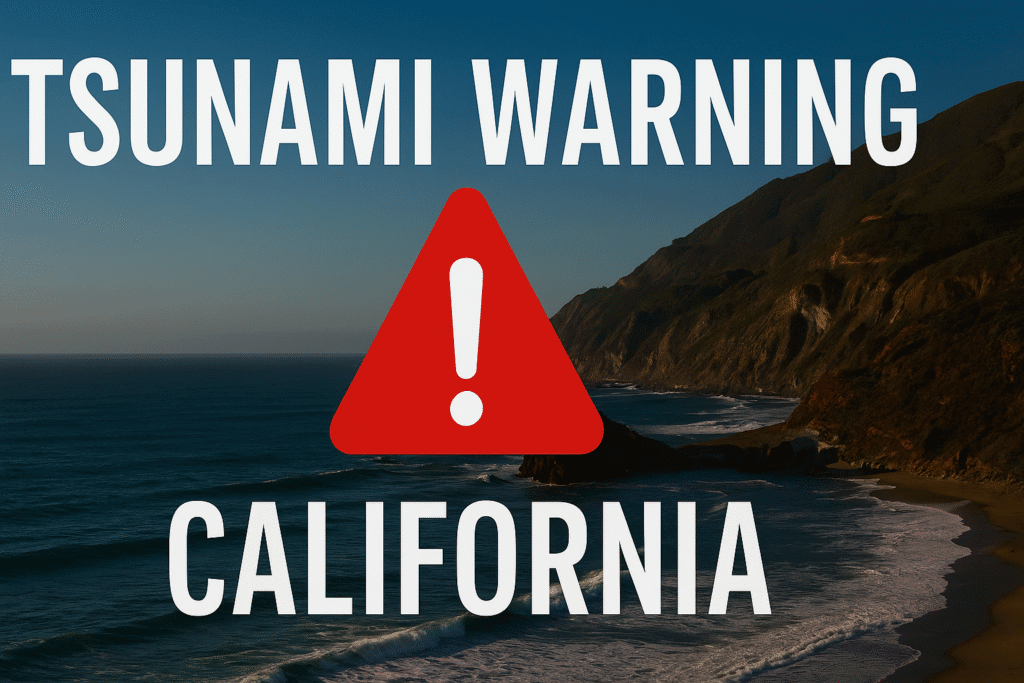Tsunami Warning California: What You Need to Know Now
In recent times, the phrase “tsunami warning California” has become a trending concern, especially in light of increasing seismic activity along the Pacific Ring of Fire. Californians, long aware of their vulnerability to earthquakes, are now turning their attention to the looming threat of tsunamis. With the recent earthquake activity near Russia and ripples felt along the U.S. West Coast, authorities have sounded alarms, urging residents to be prepared.
Understanding the Latest Tsunami Warning
A tsunami warning is issued when a potential or confirmed tsunami poses a significant threat to coastal areas. On July 30, 2025, seismic tremors originating near Russia triggered tsunami alerts for parts of the California coastline, raising public concern and prompting swift action from emergency services and government agencies.
According to Business Today, the earthquake that occurred in the Russian Far East had enough magnitude and depth to cause concerns about oceanic wave activity reaching U.S. shores. Consequently, California officials began issuing warnings for cities and towns along the coast.
Tsunami Watch vs. Tsunami Warning
Before diving further, it’s important to understand the difference between a tsunami watch and a tsunami warning:
- Tsunami Watch: Indicates that a tsunami is possible. Residents are advised to stay alert and monitor updates.
- Tsunami Warning: Issued when a tsunami is imminent or already occurring. Immediate action is required to evacuate or move to higher ground.
The Paso Robles Press confirmed that the tsunami watch for California was upgraded to an advisory, reinforcing the seriousness of the threat. You can read the full report here.
Affected Areas in California
The tsunami advisory affected a broad range of California coastal areas, including:
- Northern California: Crescent City, Eureka, and Arcata saw water surges and were placed on high alert.
- Central Coast: Communities like Monterey, San Luis Obispo, and Santa Cruz braced for rising tides.
- Southern California: Los Angeles, Long Beach, and Orange County took precautionary measures, though the tsunami’s impact was expected to be less severe in these areas.
Local governments implemented emergency evacuation protocols, closed beaches, and suspended all marine operations until further notice.
How California Prepares for Tsunamis
California has one of the most sophisticated tsunami preparedness programs in the U.S. Here’s how the state handles tsunami threats:
1. Early Warning Systems
California uses a combination of ocean buoys, seismic sensors, and satellite systems to detect tsunamis. These tools provide critical minutes of early warning, which can save lives.
2. Emergency Response Plans
Every coastal city has a tailored emergency response plan. This includes designated evacuation routes, alert systems (like Wireless Emergency Alerts), and public drills.
3. Education and Awareness Campaigns
Public service announcements, community workshops, and school drills ensure that residents understand what to do in case of a tsunami.
What Should You Do During a Tsunami Warning?
If you are in California and receive a tsunami warning, here’s what you should do immediately:
- Move to Higher Ground: Leave the beach and head inland or to a higher elevation.
- Listen to Official Instructions: Follow guidance from the National Weather Service, local police, and emergency alerts.
- Avoid Coastal Roads: These can be dangerous during evacuations and may be flooded.
- Prepare an Emergency Kit: Include food, water, a flashlight, a first aid kit, and personal documents.
- Stay Informed: Use a NOAA weather radio or mobile apps to receive updates.
The Impact of Tsunamis on California’s Coastline
Even minor tsunamis can have devastating effects on California’s infrastructure and economy. Coastal flooding can:
- Damage homes, ports, and marinas
- Disrupt fishing and tourism industries
- Erode beaches and natural barriers
- Endanger marine life and habitats
Although the recent tsunami waves did not cause catastrophic damage, the potential remains high for future events.
Climate Change and Rising Risks
Experts believe that climate change may increase the frequency and severity of natural disasters, including tsunamis. As ocean temperatures rise and tectonic activity intensifies, California’s vulnerability grows. It’s critical for policymakers and citizens alike to prioritize disaster readiness and invest in resilient infrastructure.
Looking Ahead: Staying Prepared
Tsunamis may strike with little warning, but preparation can mean the difference between safety and tragedy. The latest “tsunami warning California” incident has served as a wake-up call to residents and officials. It reinforces the importance of staying informed, having a plan, and understanding the real risks involved.
For up-to-date alerts and tsunami tracking, always monitor:
- National Weather Service (NWS)
- U.S. Geological Survey (USGS)
- California Office of Emergency Services (Cal OES)
Conclusion
The recent tsunami warning in California, triggered by seismic activity in Russia, highlights how interconnected the world’s tectonic systems truly are. With coastal populations growing and climate uncertainties rising, Californians must stay alert and proactive.
You can read more about this unfolding story on Business Today and the Paso Robles Press.
Stay safe. Stay prepared.
Focus Keyword: tsunami warning California
Meta Description: Stay updated on the latest tsunami warning in California. Learn which areas are affected, how to stay safe, and what triggered the alert.
Alt Text for Image: California coastline with tsunami warning alert
Tags: tsunami warning California, California coast, tsunami advisory, Russia earthquake, US west coast alert, Pacific Ring of Fire, emergency evacuation, California tsunami news, seismic activity, coastal preparedness

